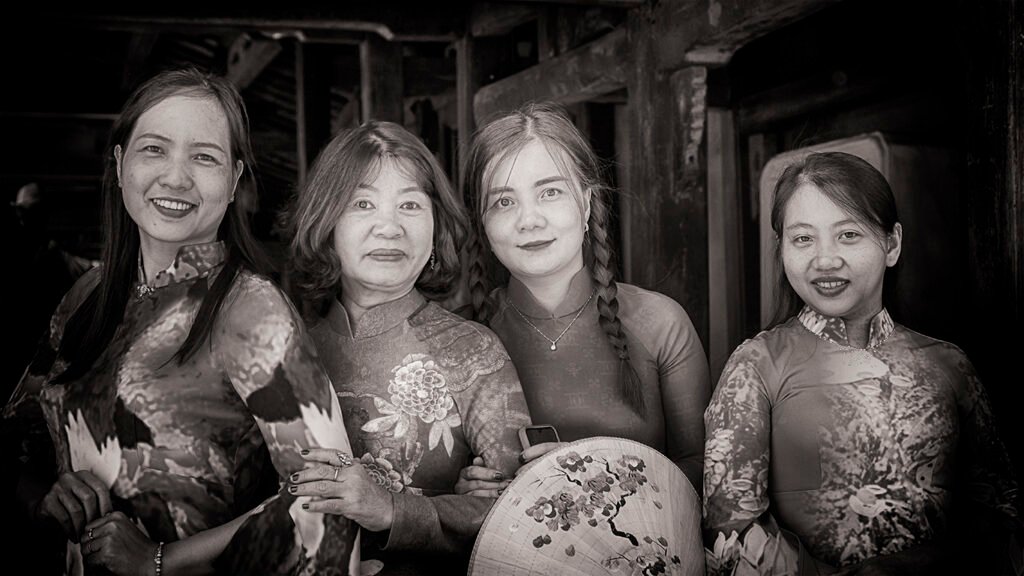
In the golden streets of Hoi An, where old yellow walls lean like aging poets and paper lanterns sway on invisible breezes, a quiet transformation unfolds each morning. As the sun glows over the Thu Bồn River and motorbikes begin their patient puttering, tailors open their shops—and the silk starts to fly.
By noon, tourists emerge.
Wrapped in long, flowing áo dài, they walk slowly, reverently, like they’ve stepped into someone else’s dream. Some are young women with wide eyes and flowered headbands, giggling in rented heels and drawn by the elegance of the form: high collars, long tunics split at the sides, and pants that whisper with each step.
The áo dài is not a costume. It is culture distilled—worn by generations of Vietnamese women with pride, grace, and a quiet power. Yet in Hoi An, it has also become an invitation: to step into something beautiful, if only for an afternoon.
Some tourists wear it as homage. Others, simply for the photos.
But in those fleeting hours, the transformation is genuine. A young woman adjusts her posture, standing taller than usual. A Singaporean mother beams as her daughter runs beneath hanging lanterns in a child-sized pink áo dài. Some pose against an ochre wall, sunlight bouncing off their sleeves, speaking softly as if afraid to break the spell.
The locals watch with a mix of amusement and quiet approval. Tailors, who stitched those garments just hours before, smile from doorways. Elderly women in conical hats nod, sometimes stopping to compliment the fit, or to correct a fold of silk out of place. Vendors at the central market lean forward and say, “You look Vietnamese now,” half-joking, half-proud.
Yet there’s an undercurrent to it all—a silent hope that this wearing is not just for Instagram likes, but for something deeper. That in slipping into the áo dài, tourists might also slip into the rhythm of Vietnam: slow, warm, layered with memory. That they might understand, for even a breath, what it means to be part of a culture where beauty is in the details and dignity walks in every seam.
As twilight falls and the lights begin to glow across the Ancient Town, many tourists return the dresses, change clothes, and disappear into the riverside crowds. But for a few, something lingers—an elegance, a stillness, a thread.
The áo dài, after all, is not just worn. It’s remembered.